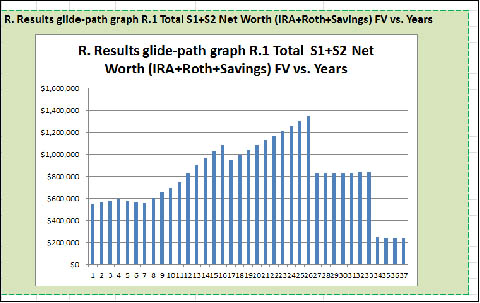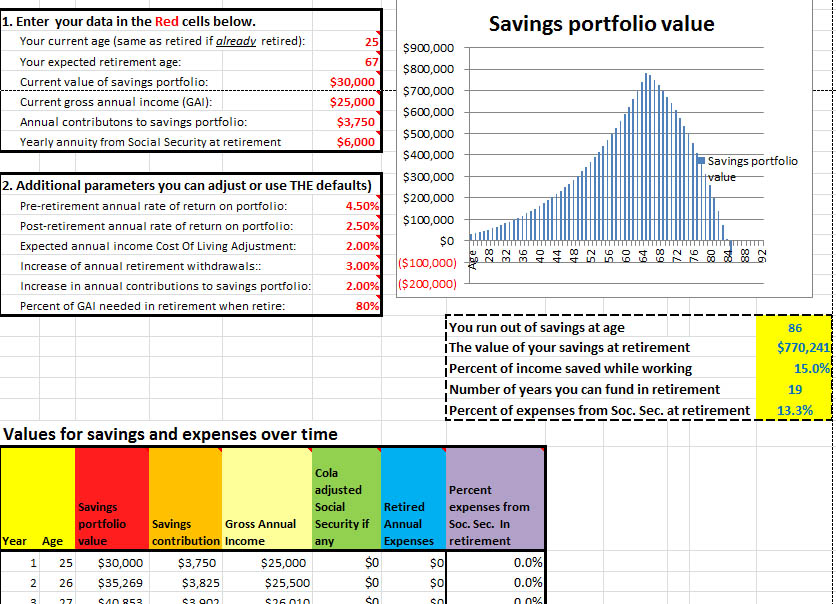DOWNLOAD: Download individual Excel files by clicking on the links for particular files in the following spreadsheet descriptions. Click on the link to download the Excel spreadsheet file to the location that your computer saves downloaded files (e.g., "download" directory on Windows, etc.). To edit and save your data, the version of Excel on your computer may require you to click on "Enable Editing" if it says "Protected View" at the top of the screen when you first start the spreadsheet.
|
Revision notes for the V.0.27.03-01-18-2017a. Updated 2017 tax-tables data
in 2. TaxData worksheet. Added optional 529 education accounts worksheet. The
529 data was then integrated into the S.Setup S.2, 11. CashData Worksheets. Tables
and graphs were added to R. Results R.5.3 to refect the new optional 529Data
worksheet. Added additional references to the RS. Resources. The 11. CashData
subtables 11.1, 11.2 and 11.3 were reorganized to handle the additional optional
529Data entries. Added additional subsections in Appendix B B.5.2 expenses
calculator to let you add entries and also compute both working and retired
expenses.
Revision notes for V.0.25.02-10-02-2016a. Added optional alternate
COLAs for S1 and S2 in the 10. ExpensesData 10.2.1 irregular expenses data entry
table. This lets you specify COLAs for expenses that you expect to have a much
higher or lower COLAs than the default expense COLA specified in 10.1.2. If the
alternate COLA value specified is 0%, it defaults to the default expenses COLA.
An example might be future college costs that may be on the order of 5%. Some
COLAS may even be negative. Values of the S1 and S2 alternate COLAs not zero
are flagged with a green background. Also, fixed non-critical retirement age
display link in 10.1 ExpensesData "S2" yearly expenses after retire at age".
Revision notes: for V.0.24.17-09-22-2016c.
Changes were made based on some initial feedback from Bogleheads.org. The FAQ was
edited and added entry 16. "Why are there separate COLAs for various income
sources Work, Pension, Social Security and Annuities worksheets?". Added optional
COLA override for the Work and Annuity data. Otherwise it uses the CPI. The
TODO-List was updated for clarity. The ease of navigation to the Results worksheet
was improved from all data entry worksheets. A dynamic total summary net worth
glide-path results graph was added to each editable data entry worksheet so users
may immediately see the results of any changes they make to the data as shown in
this screenshot:

